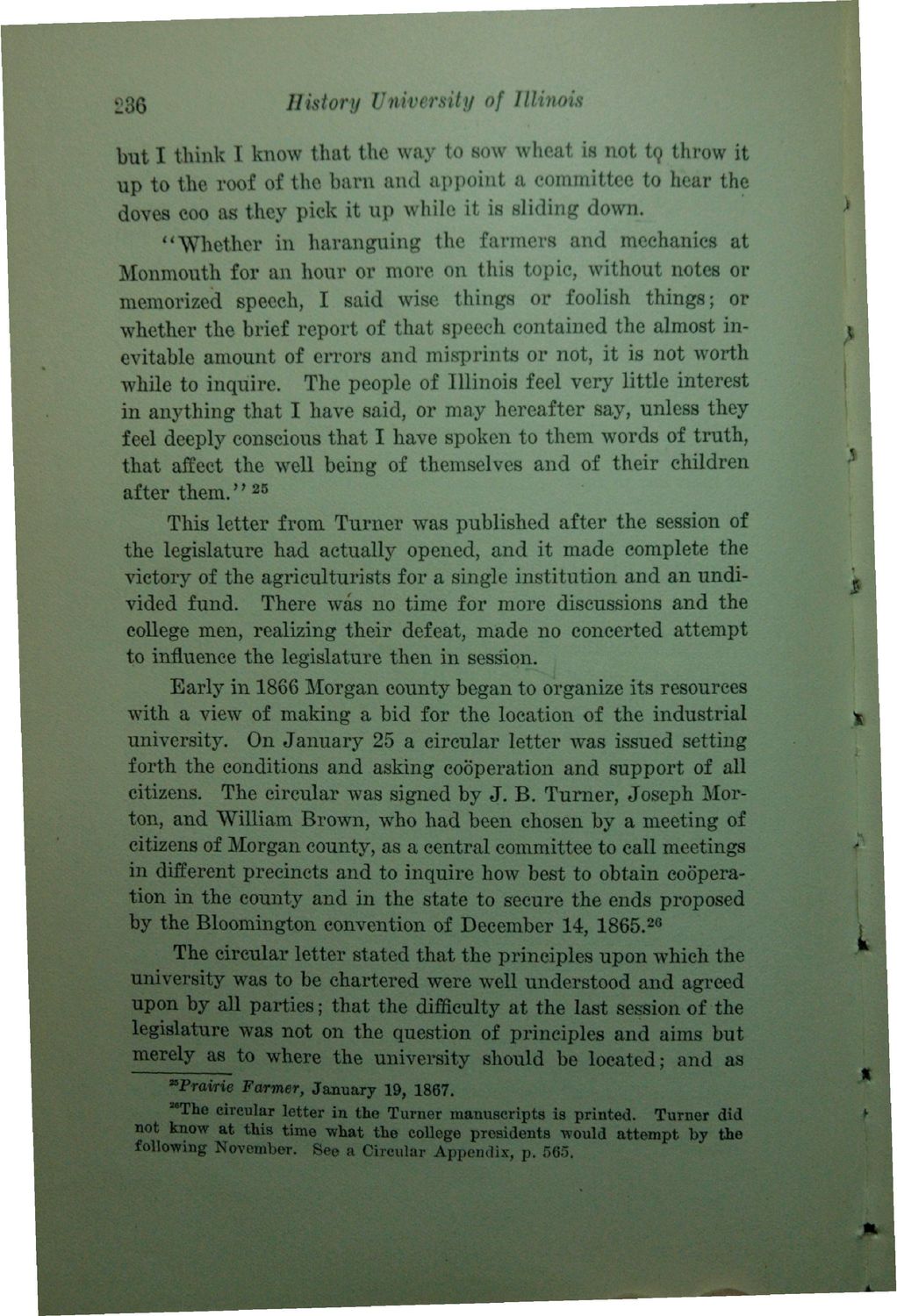| |
| |
Caption: Book - History of the University (Powell)
This is a reduced-resolution page image for fast online browsing.

EXTRACTED TEXT FROM PAGE:
286 History University of Illinois but I think I know that the way to sow wheat is not tq throw it up to the roof of the barn and appoint a committee to hear the doves coo as they pick it up while it is sliding down. " Whether in haranguing the farmers and mechanics at Monmouth for an hour or more on this topic, without notes or memorized speech, I said wise things or foolish things; or whether the brief report of that speech contained the almost inevitable amount of errors and misprints or not, it is not worth while to inquire. The people of Illinois feel very little interest in anything that I have said, or may hereafter say, unless they feel deeply conscious that I have spoken to them words of truth, that affect the well being of themselves and of their children after them." 2 5 This letter from Turner was published after the session of the legislature had actually opened, and it made complete the victory of the agriculturists for a single institution and an undivided fund. There was no time for more discussions and the college men, realizing their defeat, made no concerted attempt to influence the legislature then in session. Early in 1866 Morgan county began to organize its resources with a view of making a bid for the location of the industrial university. On January 25 a circular letter was issued setting forth the conditions and asking cooperation and support of all citizens. The circular was signed by J. B. Turner, Joseph Morton, and William Brown, who had been chosen by a meeting of citizens of Morgan county, as a central committee to call meetings in different precincts and to inquire how best to obtain cooperation in the county and in the state to secure the ends proposed by the Bloomington convention of December 14, 1865.26 The circular letter stated that the principles upon which the university was to be chartered were well understood and agreed upon by all parties; that the difficulty at the last session of the legislature was not on the question of principles and aims but merely as to where the university should be located; and as ^Prairie Farmer, January 19, 1867. 'The circular letter in the Turner manuscripts is printed. Turner did not know at this time what the college presidents would attempt by the following November. See a Circular Appendix, p. 565. > • L *
| |